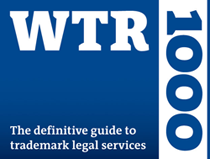Intellectual Property Insights from Fishman Stewart
Volume 21, Issue 2


Building Stronger Links
A break in the chain of ownership of an intellectual property (“IP”) asset can be just as fatal to its value to a potential new owner as the failure to update the chain of ownership following the sale of real estate.
All organizations own IP, whether it be brand names, innovative products or processes or literary or other copyrightable works. In addition, many organizations have obtained trademark registrations, copyright registrations and patent certificates for their IP with the U.S. Patent and Trademark Office, the U.S. Copyright Office, and corresponding IP offices around the world. When an organization undergoes a name change or a conversion, or is the subject of an asset purchase, a merger or other type of acquisition or transaction, the organization’s IP oftentimes changes ownership and the ownership records of the organization’s trademark and copyright registrations and patent certificates in the IP offices around the world must be updated to reflect the new owner.
Moreover, this “chain of title” must be updated as soon as possible after the close of the transaction in much the same way that an updated deed to real estate must be timely recorded. Delays in updating the chain could result in loss of IP rights.
U.S. law governing the assignment of patent certificates and registered trademarks provides that an assignment of a patent or trademark is void against a subsequent bona fide purchaser of these IP assets, unless the assignment is recorded with the U.S. Patent and Trademark Office within three (3) months after the date of the assignment or prior to the subsequent purchase. Those familiar with real estate transactions often term this requirement a race-notice provision. If a buyer of IP assets does not timely record the related assignment with the U.S. Patent and Trademark Office, a subsequent bona fide purchaser will not have notice of the assignment and can therefore acquire the IP assets in good faith to the detriment of buyer.
Loss of rights in acquired IP assets can also occur in foreign countries if chain of title following a transaction is not promptly updated. Many foreign countries require that powers of attorney be executed by officers of each organization involved in the transaction. It is not uncommon for a transaction to include several steps, e.g., a merger, followed by a name change, followed by an assignment. If the chain is not timely updated, officers of the defunct entities are oftentimes no longer available to sign the required powers. As a result, the chain cannot be updated to the current owner. If the chain is not updated, the current owner may not be in a position to enforce its IP rights against infringers in these foreign jurisdictions. In addition, the current owner may not be able to maintain registered IP when it comes due for renewal, resulting in expiration of the asset and loss of rights.
In conclusion, following a transaction involving change of ownership of IP assets, the ownership records of the assets must be updated with the IP offices around the world to reflect the new owner of the IP and to remedy any prior deficiencies in the overall chain of title. Delays in updating the chain can be fatal, resulting in loss of IP rights.
Click here for our full TackleBox Insights white paper on updating chain of title.

New Leadership
The peaceful transition of power does not stop at the President. Indeed, a presidential election year often sees a rippling effect of new leadership throughout all corners of government. The transitions at the United States Patent and Trademark Office (“USPTO”) will be one that we monitor closely as USPTO Director Andrei Iancu steps down. Iancu took the reins of the USPTO in 2018 and established goals including combatting intellectual property theft and counterfeiting, improving the efficiency of patent certification and trademark registration, and engaging young people in the practice of inventing and creative endeavors. Notably, Iancu and his administration awarded the milestone 10-millionth patent for a “Coherent LADAR Using Intra-Pixel Quadrature Detection,” which improves laser detection and ranging (LADAR). We are eager to see who will be confirmed as the next director of the USPTO and what priorities will be established for U.S. intellectual property regulation.
IDENTIFYING, SECURING AND ADVANCING CREATIVITY®








